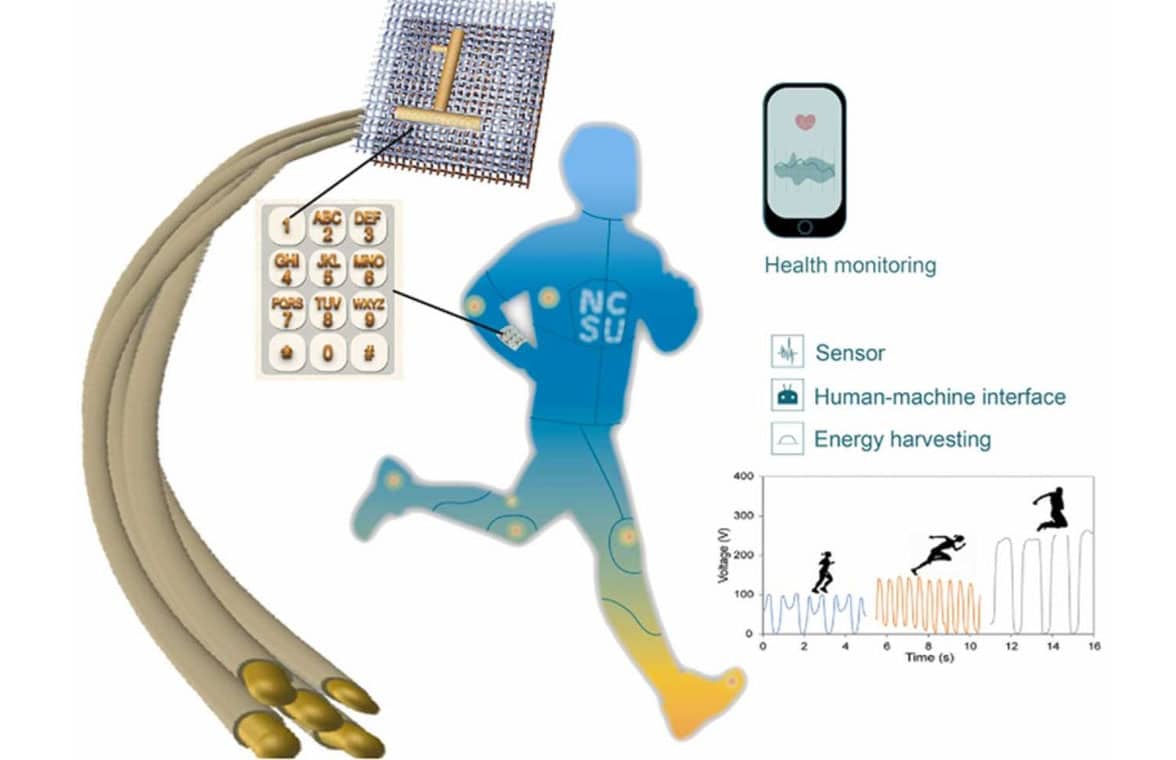
Researchers at North Carolina State University in the USA have developed and tested a technique for integrating low-cost wearable devices such as motion sensors into clothing by embroidering patches containing yarns that draw energy from a wearer’s movements onto standard fabric or already existing garments.
The technique addresses challenges associated with other methods of integrating wearable electronics into fabric such as scalability, durability and instability, and uses readily available commercial products. Prototype testing has “demonstrated its potential in biomechanical energy harvesting, self-powered sensor applications and human-machine interaction”, the researchers say.
During their research, the team developed power-generating yarns using polyurethane-coated copper wires and a PTFE-based synthetic fabric and tested them as motion sensors by placing “embroidery patches on the palm, under the arm, at the elbow and at the knee to track electrical signals generated as a person moves”.
They also “attached fabric with their embroidery on the insole of a shoe to test its use as a pedometer, finding their electrical signals varied depending on whether the person was walking, running or jumping” and created “a textile-based numeric keypad on the arm” that “generates different voltage for each number” and “could be used as an interface”.
Embroidery
“Our technique uses embroidery which is pretty simple — you can stitch our yarns directly on the fabric,” research lead Rong Yin explains.
“During fabric production you don’t need to consider anything about the wearable devices. You can integrate the power-generating yarns after the clothing items have been made.”
The technique uses “a method of generating electricity called the triboelectric effect, which involves harnessing electrons exchanged by two different materials, like static electricity”. This enabled researchers to create prototypes with “electrical properties […] comparable to other designs that relied on the same power generation mechanism”, Yin adds.
Following the publication of their research paper, the team now plans to integrate the sensors with other devices into “a wearable system” and add more functions.
Next: Visit the NFCW Expo to find new suppliers and solutions